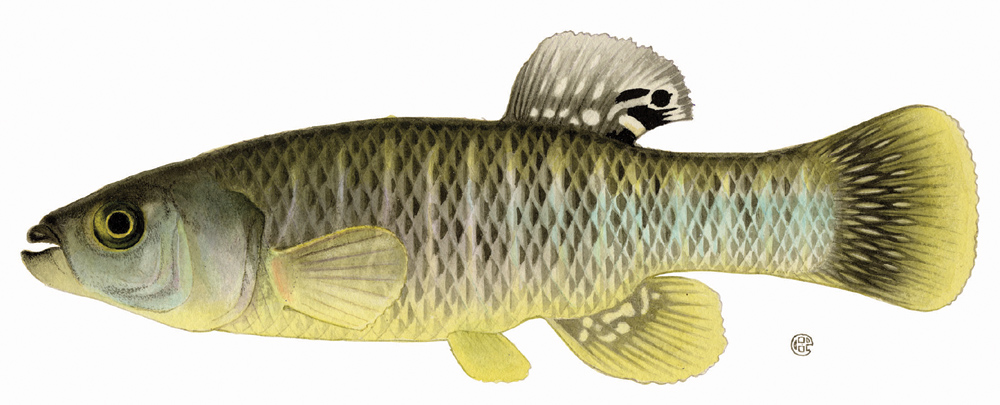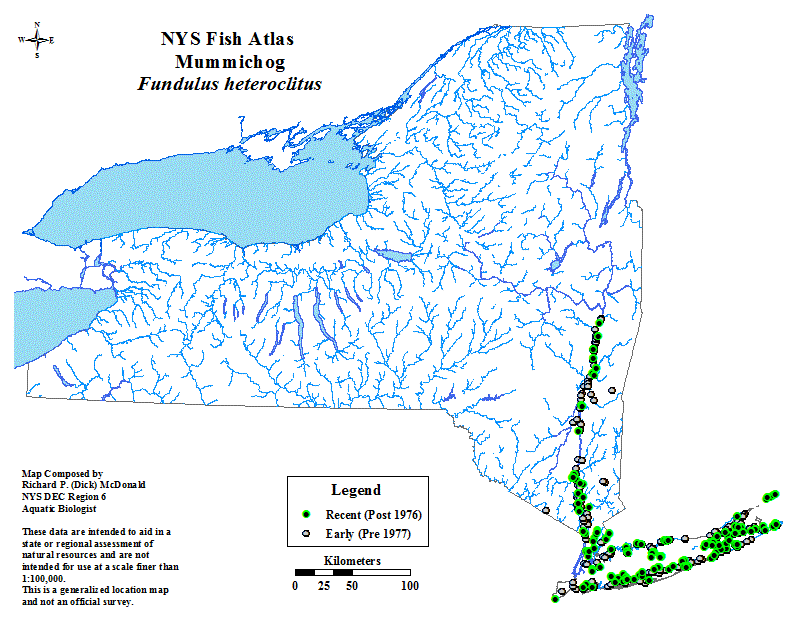
Mummichog (Fundulus heteroclitus)
The mummichog is an estuarine species that can tolerate a wide range of salinities. It frequently occurs together with the banded killifish in fresh water and areas of low salinity. It can tolerate rather high temperatures, up to 93 F at 14 ppt salinity.
The general range of the mummichog is from northeastern F1orida to the Gulf of St. Lawrence. Current studies by Able and others suggest that there is a northern form, E h. macrolepidotus, which appears to intergrade with the typical mum- michog, E h. heteroclitus, in New Jersey. Both forms have been taken on Long Island. They are distinguished by egg structure (number of filaments and oil droplets) and in their spawning behavior. In the Hudson River, there seem to be no records between Newburgh and Claverack, but the status of the populations above and below this stretch has yet to be determined.
In Delaware, where it has been studied rather thoroughly, the mummichog spawns between April and the end of August. Spawning is cyclical and correlated with high tides associated with the times of the new and full moon. The eggs are laid at levels reached only by high spring tides. Eggs are deposited in clutches of 10 to 300 and are hidden in leaves or empty mussel shells. In these situations, the eggs are protected from drying, and hatching can be delayed for at least 2 weeks until the eggs are again reached by the tides. Apparently, most of the spawning occurs on the night tide because females collected at night had ovulated eggs in the ovary and those collected during the day did not.
The mummichog consumes a variety of plant and animal matter including diatoms, amphipods, mollusks, crustaceans, small fishes, fish eggs, and sea grass fragments. It is widely used as an experimental animal, especially for studies of endocrinology.
Distribution of mummichog in NY state.
A 170 KB image of the mummichog is also available for download.
The above species description was taken out of "The Inland Fishes of New York State" by C. Lavett Smith, published by the New York State Department of Environmental Conservation, 1985.
